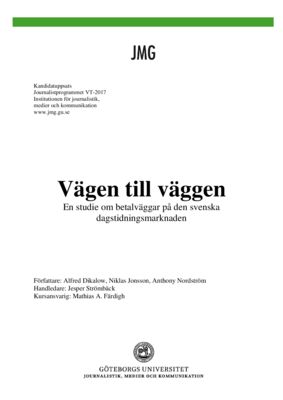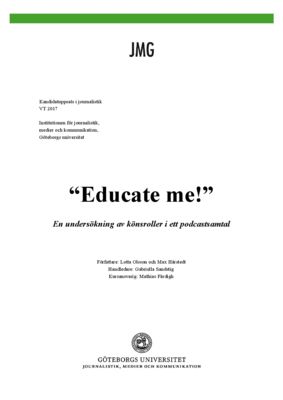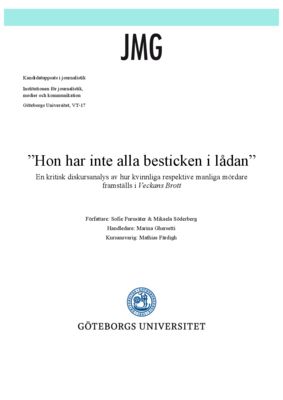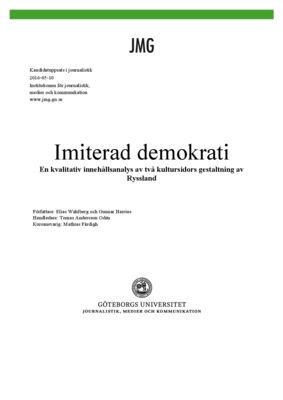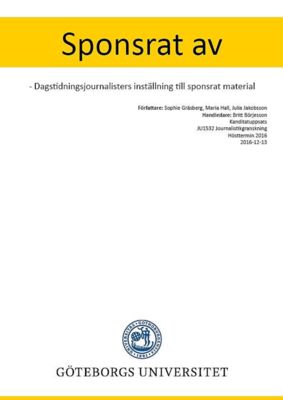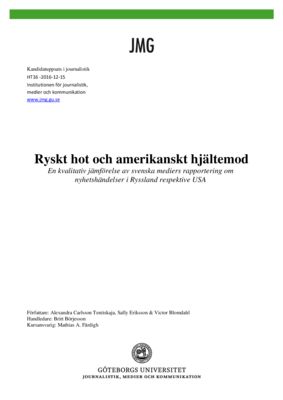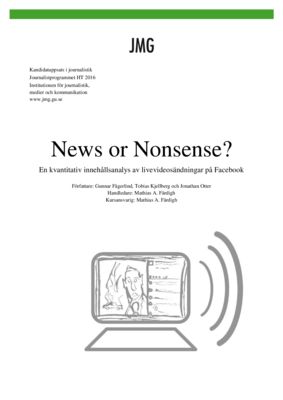During the last decades, the Swedish newspaper industry has seen a decline in circulation and ad revenues. Most of the Swedish daily newspapers are present online, and has been since the middle of the 1990s. The general situation has been that the news offered online are free to read, and as a result, daily newspapers have relied on ad revenues to fund their presence online. With the rise of major players on the online ad market, such as Google and Facebook, the newspapers in Sweden have been faced with a new problem when it comes to making their online presence profitable. A solution to the problem, brought forth by the daily newspapers, has been to implement paywalls on their online news sites.
This study examines the general situation for Swedish daily newspapers when it comes to paywalls. By using a quantitative method, the study examines the occurrence of paywalls on Swedish daily newspapers, as well as examining what kind of paywalls the Swedish daily newspapers use. Furthermore, the study tries to seek out the incentives that the Swedish daily newspapers have when it comes to implementing a paywall, as well as examining the reasons for choosing a specific type of paywall. This is done by using a qualitative method in the form of semi structured interviews with representatives from five Swedish media groups.
Our study shows that around two thirds of the Swedish daily newspapers already have some kind of paywall implemented on their online news sites, and that the most common type of paywall is the soft paywall. The results from our study also show that the type of paywall that an online newspaper uses, seem to be dependent on what news group the newspaper is a part of, and if one publication in a newsgroup uses a certain type of paywall, the rest of the publications in the news group are likely to use the same type. Furthermore, the study shows that several of the daily newspapers without some form of paywall, are going to be implementing one in the near future.
The main reason for implementing a paywall seems to be a general opinion amongst the media groups, which argues that the newspapers need more than just one source of revenue in order for them to be financially viable.
Keywords: Paywall, Swedish newspapers, Digital revenue, Digital subscriptions, Online news, Paid content
